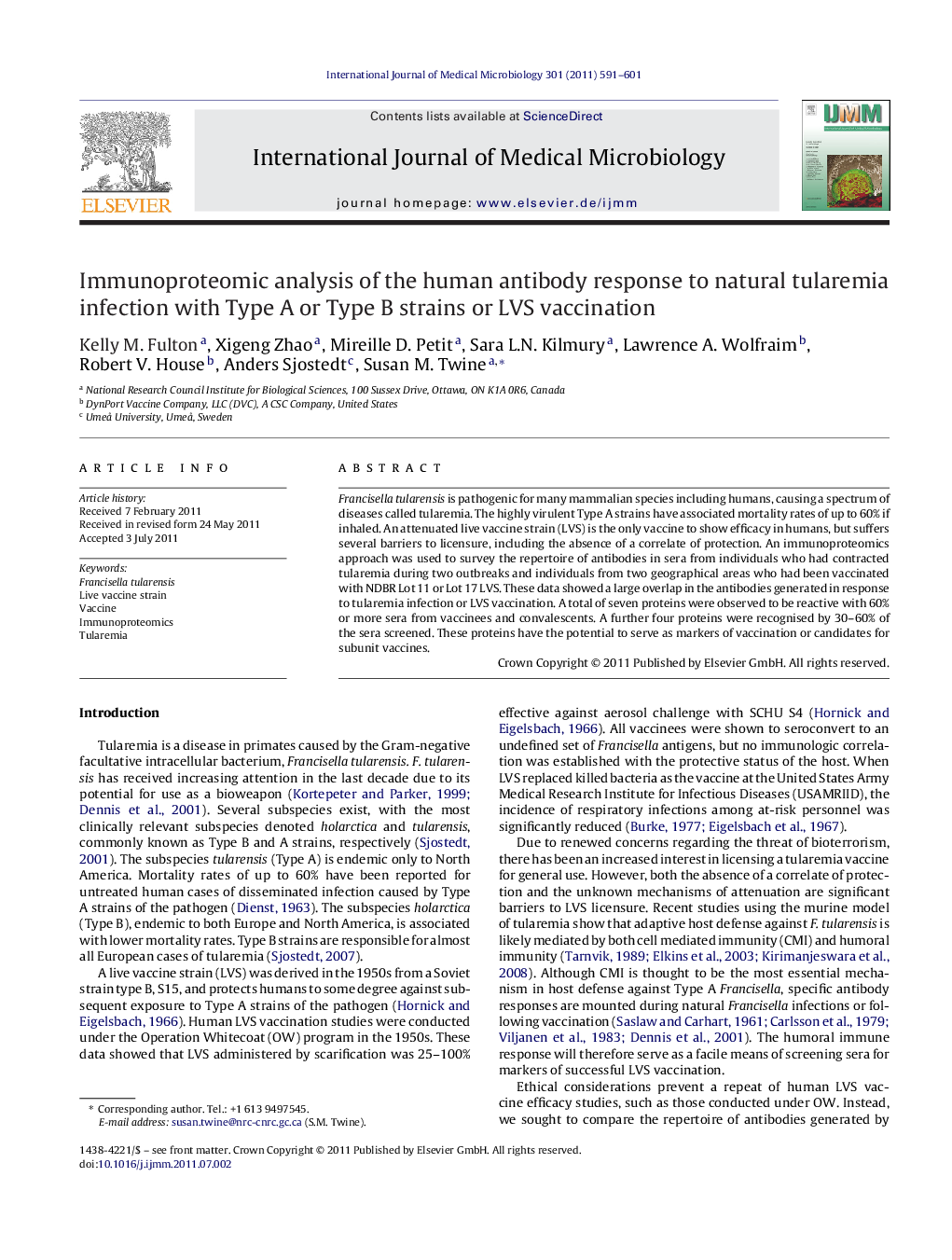| Article ID | Journal | Published Year | Pages | File Type |
|---|---|---|---|---|
| 2054858 | International Journal of Medical Microbiology | 2011 | 11 Pages |
Francisella tularensis is pathogenic for many mammalian species including humans, causing a spectrum of diseases called tularemia. The highly virulent Type A strains have associated mortality rates of up to 60% if inhaled. An attenuated live vaccine strain (LVS) is the only vaccine to show efficacy in humans, but suffers several barriers to licensure, including the absence of a correlate of protection. An immunoproteomics approach was used to survey the repertoire of antibodies in sera from individuals who had contracted tularemia during two outbreaks and individuals from two geographical areas who had been vaccinated with NDBR Lot 11 or Lot 17 LVS. These data showed a large overlap in the antibodies generated in response to tularemia infection or LVS vaccination. A total of seven proteins were observed to be reactive with 60% or more sera from vaccinees and convalescents. A further four proteins were recognised by 30–60% of the sera screened. These proteins have the potential to serve as markers of vaccination or candidates for subunit vaccines.
